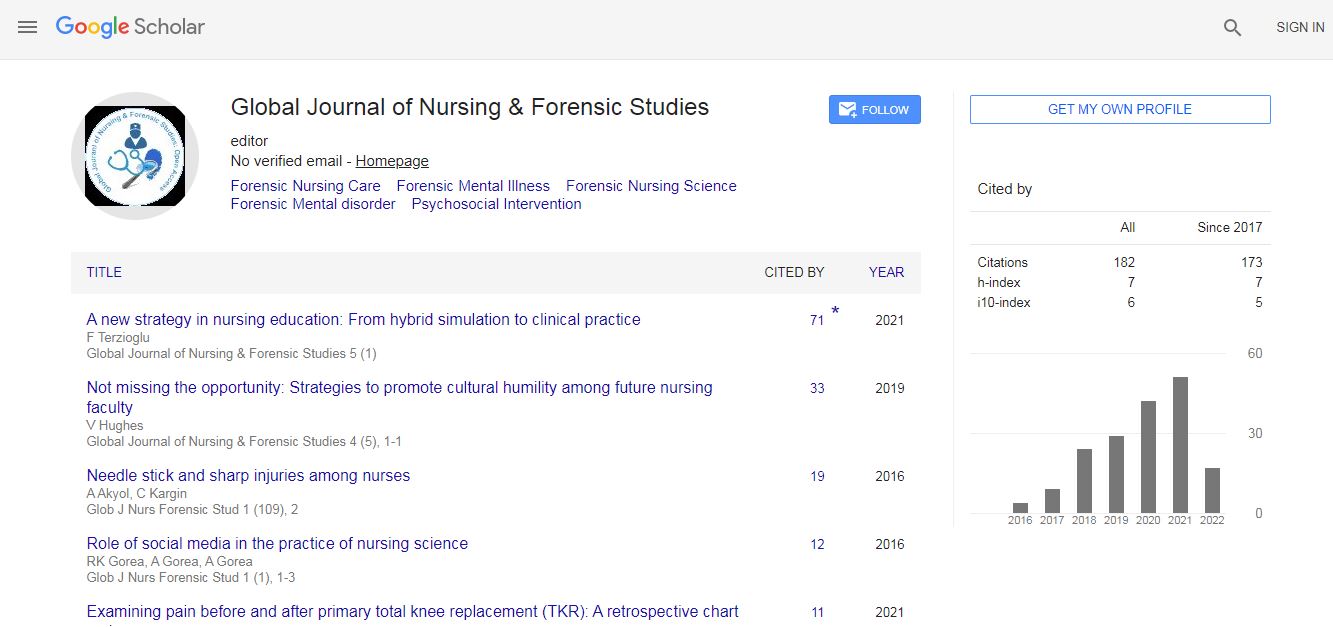Our Group organises 3000+ Global Conferenceseries Events every year across USA, Europe & Asia with support from 1000 more scientific Societies and Publishes 700+ Open Access Journals which contains over 50000 eminent personalities, reputed scientists as editorial board members.
Open Access Journals gaining more Readers and Citations
700 Journals and 15,000,000 Readers Each Journal is getting 25,000+ Readers
Google Scholar citation report
Citations : 82
Optometry: Open Access received 82 citations as per Google Scholar report
Indexed In
- Google Scholar
- RefSeek
- Hamdard University
- EBSCO A-Z
- Euro Pub
- ICMJE
Useful Links
Recommended Journals
Related Subjects
Share This Page
Correlation between tear film lipid layer and symptoms in diabetic patients with meibomian gland dysfunction
World Congress and Expo on Optometry & Vision Science
Johanna Garzon P and Antonio Lopez-Alemany
La Salle├?┬┤s University, Colombia University of Valencia, Spain
ScientificTracks Abstracts: Optom Open Access
Abstract
Purpose: To assess the tear film lipid layer pattern in type 2 diabetes patients and healthy subjects, the correlation of the symptoms between the Ocular Surface Disease Index (OSDI) symptom questionnaire and the National Eye Institute Vision Functioning Questionnaire (NEI-VFQ). Methods: This is a case-control study and all patients were investigated for the presence of meibomian gland dysfunction/ MGD using the International Work Shop in MGD├ó┬?┬?s criteria according to the meibomian glands/MG secretion├ó┬?┬?s quality and viscosity, MG├ó┬?┬?s morphology, and lipid layer thickness/LLT. The LLT was measured using interferometry Polaris system prior and subsequent to a 10-minute period. The Ocular Surface Disease Index (OSDI) symptom questionnaire and the National Eye Institute Vision Functioning Questionnaire (NEI-VFQ) were correlated. The results between groups were analyzed using the statistical Kruskal-Wallis and Mann-Whitney tests association between variables was explored by Spearman├ó┬?┬?s correlation. Results: 73 subjects were studied (37 diabetics and 36 controls). The mean age was 59├?┬▒8.7% of participants presented MGD (76% diabetics and 67% controls).The symptoms through OSDI questionnaire was significantly higher (p=0.016) in the diabetic group with a lower NEI VFQ (67.86; p=0.002). The lipid layer pattern was lower in diabetic patients group with DGM; NIBUT was lower in the diabetic group (sg 2.47├?┬▒1.2), with a significant inverse correlation (52.22%) with MG inflammation and a moderate correlation (32.4%) with corneal staining. The LLT presented a positive correlation between the meibomian gland alteration as hyperkeratinisation and inflammation (p=0.0005) and symptoms. Positive correlations were found in diabetic group between corneal staining and symptoms with OSDI questionnaire. Conclusions: A correlation was found between NIBUT, inflammation and obstruction of the MG in symptomatic type 2 diabetes patients. The LLT is lower in diabetic group than in normal subjects, which implies decreased tear film stability and increased subjective symptoms associated with a decreased quality of life.Biography
Johanna Garzón P is a candidate of Doctor with PhD in Advanced Optometry and Vision Sciences in Advanced at Valencia University, Spain. She is an Optometrist of The Salle University, Specialist in Ocular Primary Careat Andina University FUAA-Colombia, Master’s in Pharmacology Sciences at National University of Colombia, UNAL. She has her expertise and research job in ocular surface, dry eye and ocular pharmacology. She is titular Professor at the Salle University in Bogotá Colombia, and is the President of Fedopto, the Professional College of Optometry in Colombia.

 Spanish
Spanish  Chinese
Chinese  Russian
Russian  German
German  French
French  Japanese
Japanese  Portuguese
Portuguese  Hindi
Hindi 